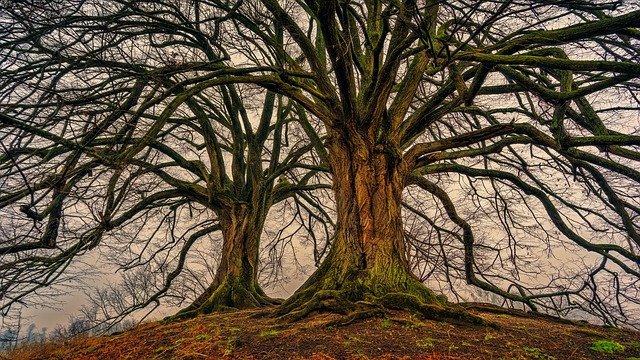a tree is a perennial plant with an elongated stem, or trunk, supporting branches and leaves in most species. Trees are not a taxonomic group but include a variety of plant species that have independently evolved a trunk and branches as a way to tower above other plants to compete for sunlight. Trees tend to be long-lived, some reaching several thousand years old. Trees have been in existence for 370 million years.

A tree typically has many secondary branches supported clear of the ground by the trunk. This trunk typically contains woody tissue for strength, and vascular tissue to carry materials from one part of the tree to another. For most trees it is surrounded by a layer of bark which serves as a protective barrier. Below the ground, the roots branch and spread out widely; they serve to anchor the tree and extract moisture and nutrients from the soil. Above ground, the branches divide into smaller branches and shoots. The shoots typically bear leaves, which capture light energy and convert it into sugars by photosynthesis, providing the food for the tree’s growth and development.
The number of trees in the world, according to a 2015 estimate, is 3.04 trillion, of which 1.39 trillion (46%) are in the tropics or sub-tropics, 0.61 trillion (20%) in the temperate zones, and 0.74 trillion (24%) in the coniferous boreal forests. The estimate is about eight times higher than previous estimates, and is based on tree densities measured on over 400,000 plots. It remains subject to a wide margin of error, not least because the samples are mainly from Europe and North America. The estimate suggests that about 15 billion trees are cut down annually and about 5 billion are planted. In the 12,000 years since the start of human agriculture, the number of trees worldwide has decreased by 46%.
